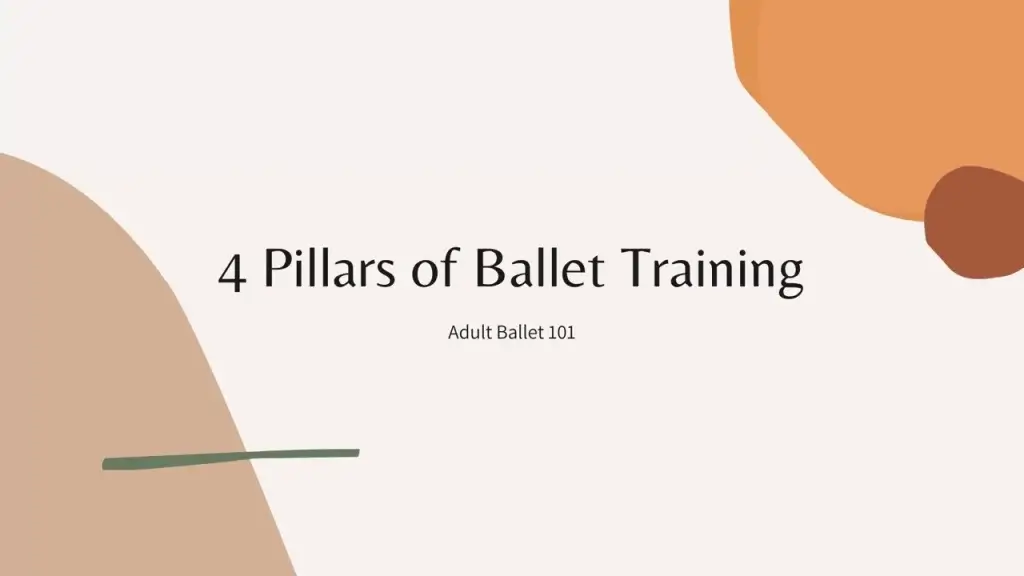
Ballet is a demanding dance. Even though professionals make it look easy – it’s very taxing on all your systems.
If you’re looking to start ballet training as an adult you need to be aware of the structure and philosophy of ballet workouts.
You will instantly recognize the ballet-specific exercises like pliés and elevés/relevés, tendus and dégagés, and rond de jambe. They are immediately associated with ballet training.
However, you need to have a clear idea why ballet workouts are the way they are, not just what’s in them.
Proper ballet training consists of a balanced combo of strength training, stretching, and breathing exercises that prepare the body for the demands of ballet.
And then there’s the warm-up which is a thing in itself.
All of these parts of ballet training are equally important, and if you want to start doing ballet as an adult you need to balance out your effort across all of these areas.
Let’s go over all of the main parts of ballet training so you know what to expect from your ballet workouts.
Ballet Warm-ups
A proper warm-up is absolutely essential for adults trying to start ballet. Not only do warm-ups prevent injuries, but ballet-specific warm ups also have you achieve better form in your main exercises.
Hip rolls and shoulder rolls (rotating the hips and shoulders to loosen up the joints and increase the range of motion) are the staple warm-up exercises of ballet training.
Neck rolls help you warm up and loosen up neck muscles so that a stiff neck does not suddenly cause painful sensations.
Ballet Stretches
Being able to stretch is essential for the proper aesthetics of your movement in ballet.
Stretches like a butterfly stretch to loosen up hips and groin, cat-cow pose (stretching your back by bending it in and out standing on all four), and the bridge pose are all essential for stretching your back and making it more flexible.
Some ballet workouts incorporate variations of hip stretches – lunges, hip circles, and swings.
Strength Training in Ballet
The two iconic ballet training exercises, pliés and elevés/relevés help strengthen legs, ankles, and toes. Plié means bending the knees with the heels on the ground to load the leg muscles, and elevés/relevés are the raising of the heels from the floor to strengthen the feet, ankles, and calves.
Ballet does not need any strength training gear like dumbbells but you will feel the bodyweight exercises. Add to that the aesthetic demands – everything you do needs to be gracious and straight – and you can be sure you will be sweating and shaking like from a good gym session.
Ballet Breathwork
Breathwork training is part of ballet training because it helps dancers improve their performance, expression, and well-being.
The ballet-specific breathing means learning to link breath with movement, choosing specific points in a phrase to breathe, and getting comfortable with panting and using the breath to punctuate movement.
Many ballet training systems will have you doing exercises that involve inhaling and exhaling deeply, slowly, and rhythmically. They are similar to yoga or pilates and enhance breath control, coordination, and relaxation.
If you want to go deeper and use ballet as a therapy workout, you can do breathwork that involves connecting with a present-moment sensation in the body, conscious breathing, and mindful breathing exercises.
Not sure if the ballet training system you’ve picked is the right one? We’ve been helping adults get into ballet for years, so get in touch with us and we will help you pick the best workout!